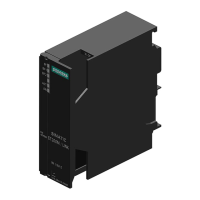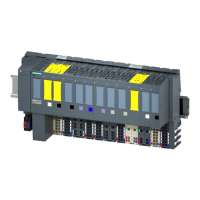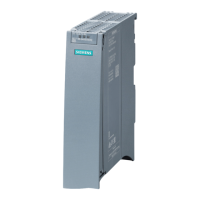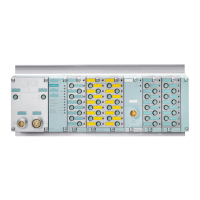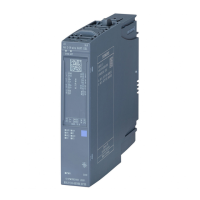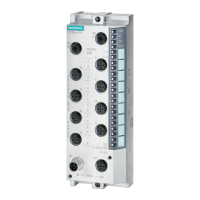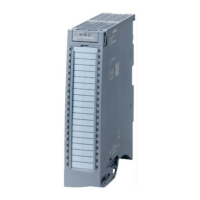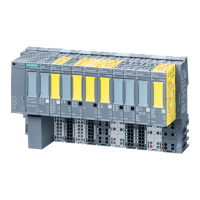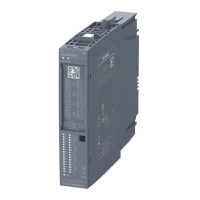Functions
5.6 PROFINET with performance upgrade
PROFINET with STEP 7 V15
Function Manual, 12/2017, A5E03444486-AH
193
The figure below compares the throughput of a PROFINET IO frame in an IO device with
and without fast forwarding.
Start:
• Both PROFINET frames reach the IO device.
The IO devices start to check the frames for the frame ID
• Without fast forwarding: The IO device is still checking the PROFINET frame for the frame
ID.
• With fast forwarding: The IO device receives the frame ID from the PROFINET frame and
forwards the frame.
After 1440 ns:
• Without fast forwarding: The IO device receives the frame ID from the PROFINET frame
and forwards the frame.
• The PROFINET frame with fast forwarding is "ahead" of the PROFINET frame without fast
forwarding.
Figure 5-58 Fast forwarding
Configuration of IRT with high performance
High-end applications with IO communication require excellent performance in IO
processing, for example in the control of wind turbines (converter control).
To use IRT communication with the highest performance in your PROFINET IO system,
enable the option "Make 'high performance' possible".
When you enable the "Make 'high performance' possible" option, this has the following
effects:
● You can set send clocks of 187.5 µs and 125 µs (for example CPU 1518-4 PN/DP) or
187.5 µs (for example CPU 1517-3 PN/DP), see Technical specifications in the CPU
device manuals.
● You can set more bandwidth use for cyclic IO data.
● You can use the option "Allows the use of 'fast forwarding'".
● S7-1500 CPU as of firmware version V2.0
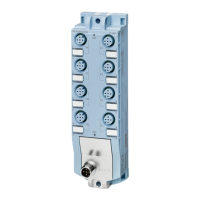
